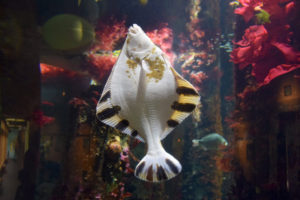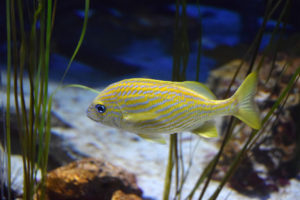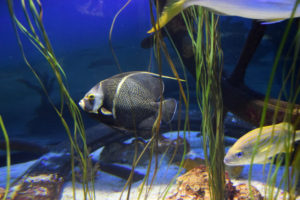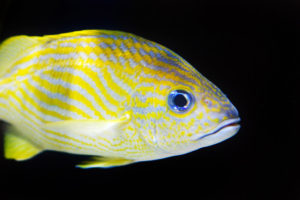
Aquarium Constructing Fish Habitat


Aquarium Objectives:
-
List the characteristics of fish that distinguish them from other vertebrate animals.
-
Link what can be learned at a fish hatchery to the basic requirements of a home fish tank.
-
Describe the significance and life cycle of anadromous salmon.
This module features earning from others within “informal” educational settings, outside of the traditional classroom.
Within a classroom setting, we expect that we will learn from others. Within informal settings like parks, aquaria, museums, and zoos, we have more choice, but that does not lessen the quality of the learning experience offered.

Aquaria primarily feature aquatic ecosystems and zoos primarily focus on terrestrial ecosystems.
We are heading to aquaria first and even though the organisms that pop into the mind are usually “FISH” and we will focus on them, there are often many others species to observe. At the Hatfield Marine Science Center in Newport, OR, there are entire exhibits dedicated to marine invertebrates.
The most frequently visited marine habitat in Oregon is the tidal pool ecosystem and as we saw earlier in the course, they are largely inhabited by producers and marine invertebrates. So it makes sense that a local aquarium would feature these species.

These photos are from the nearby Oregon Coast Aquarium. Can you match each organism to its corresponding phylum?
Fish
The main event at an aquarium is typically a large diversity of fish species in different tanks simulating a variety of aquatic habitats.
We have already looked at three of the vertebrate animal groups: amphibians, reptiles, and mammals.
Vertebrate Groups

Fish

Amphibians

Reptiles

Birds

Mammals
Fish
Fish are a large group of vertebrate animals that share some similar characteristics.
This brief video introduces fish, the taxa (group) that gave rise to all vertebrates on Earth today.
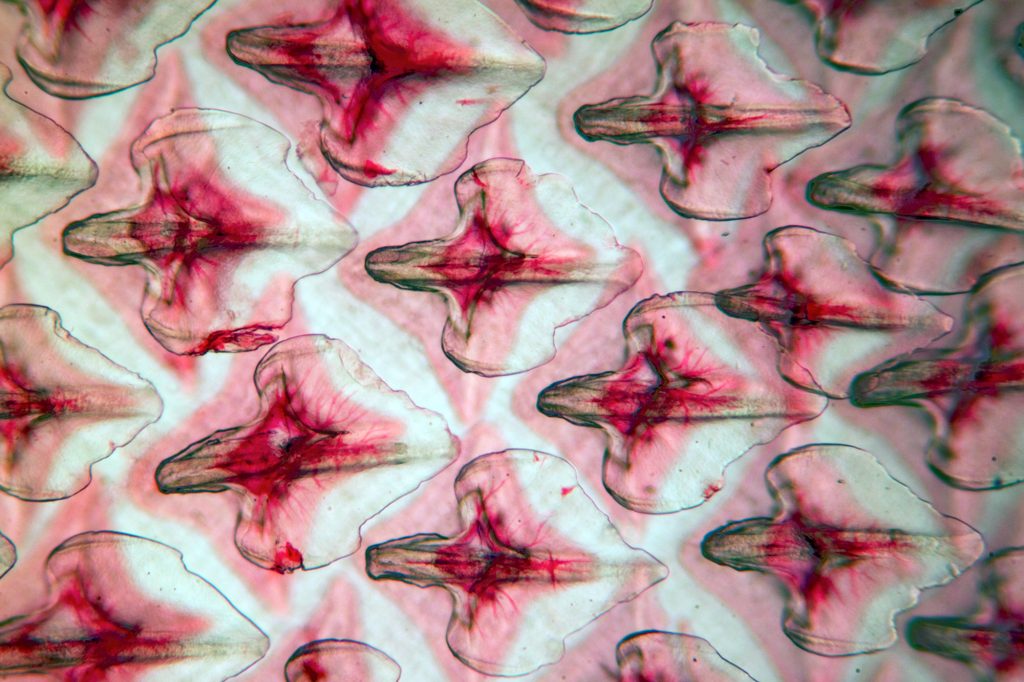
Scales are a significant integumentary (“covering”) structure in fish. The same genes that code for mammalian teeth and hair code for fish scales.
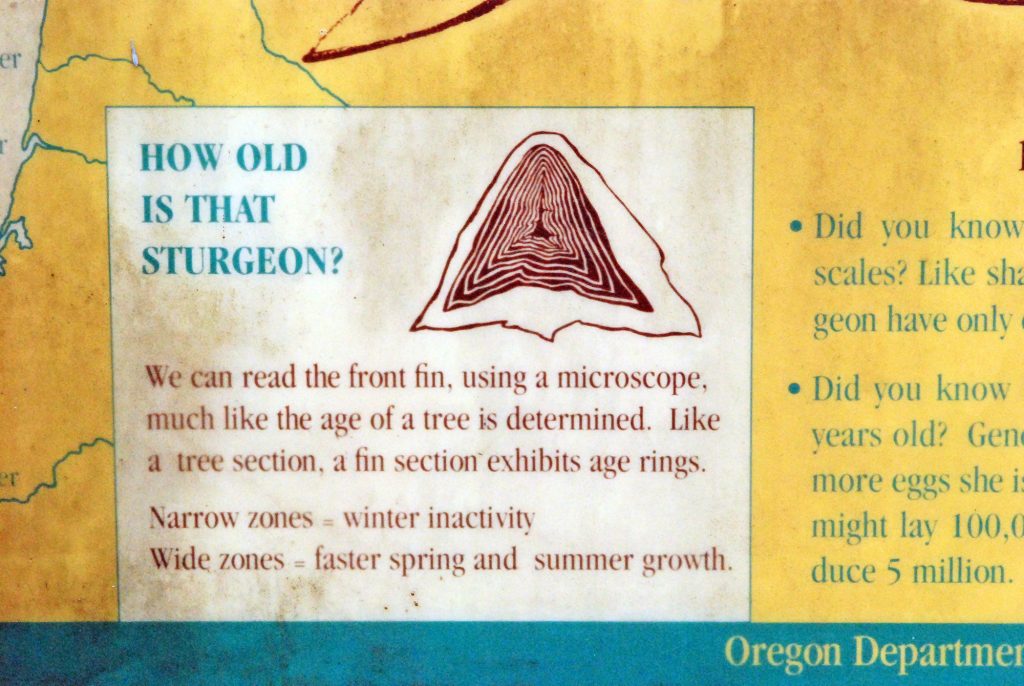
In some scales, layers indicate growth like the rings of a tree branch.
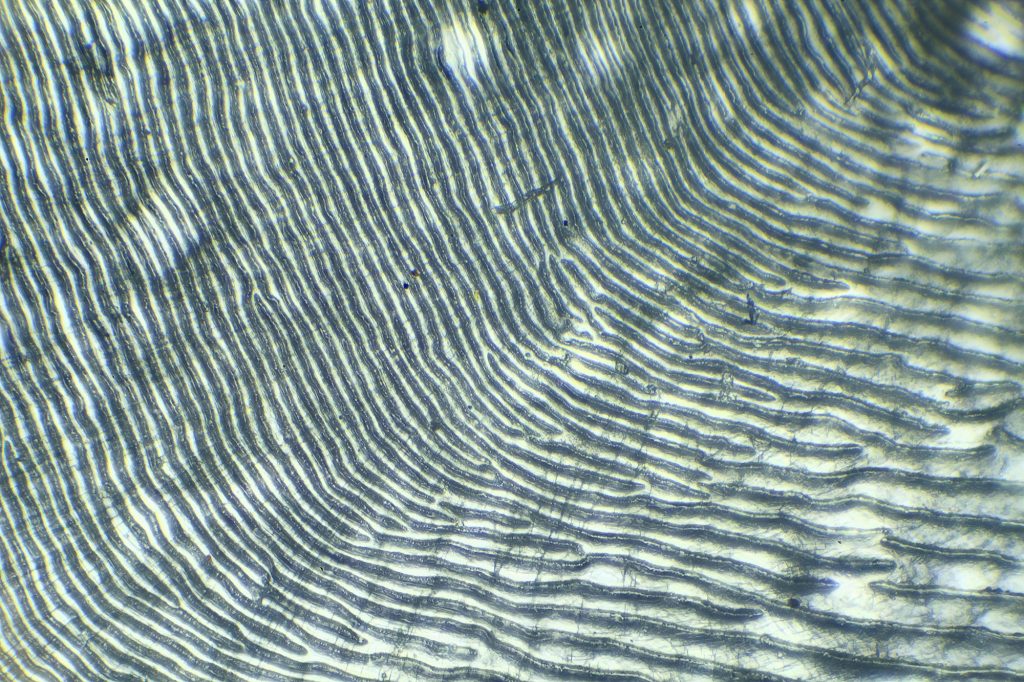

If you don’t have farms to visit in your area, you may have fish hatcheries raising generations of animals for food consumption or release into waterways. Most have interpretive signage and the ability to interact with some of the fish. The animal husbandry involved in keeping thousands if animals healthy with minimal cost is fascinating.
We are at Cascadia Park on the Santiam River in Oregon.
Although we typically think of the adult life stage when we think of an animal, there are often far more immature individuals in a population; most may not survive until adulthood. These fish fry have recently hatched, but are attracting the attention of larger predators.
Next we are headed to a fish hatchery that raises rainbow trout.
Hatcheries typically have different rearing tanks with various life stages of fish. It is an opportunity to observe developmental changes.
As trout mature, gene expression changes, hormones are produced and we can obseve a phenotypic change in color.
For the trout to have reached this population size in a small pond, the carrying capacity must have been raised artificially. This includes supplying food and minimizing disease transmission.
It takes an enormous amount of food to raise fish in a hatchery. They are efficient eaters, all of these pellets will be consumed, some will pass through the fish digestive tracts, some of the energy will be used to sustain respiration, and the remaining chemical energy may be stored, along with nutrients

Another option for studying fish is to build and maintain an aquarium. The considerations are similar to deciding which fish to maintain in a large hatchery.
If just starting with an aquarium, it is best to select a species that survives in conditions that are easy to maintain. If you live by saltwater, you could have inexpensive access to a saltwater supply. Otherwise it is easier to start with freshwater since it is already available. Municipal additives like chlorine may have to be removed whenever water is changed.
Consider selecting a fish that lives in a range close to your home’s temperature. Tropical fish may need a heater and coldwater fish may need expensive cooling systems or kept outdoors.
Other considerations include whether the fish are from faster moving water (need more aeration) and whether they need live foods which can be more costly. Purchase a large tank if possible to minimize fluctuations in water conditions, and add animals slowly after nitrogen-processing bacteria and plants have had an opportunity to establish in the substrate.

Salmon

We are back at the Museum of Natural and Cultural History in Eugene, OR. When you think of fish species in the Pacific Northwest that have strongly impacted the lives of first peoples to the region, what fish come to mind? (O.K., don’t look at the tile of this section :).
It’s the salmon! The cultural significance of salmon species is why they are some of the most studied wild animals on Earth.
The anadromous (ocean-going) salmon have an incredible life cycle. This game shows the basic steps.
Here are the names of the salmon life stages where they occur in the real world.
Salmon mating, and the cycle begins anew.
The next section tours zoos; collections emphasizing terrestrial animal species.

Check your knowledge. Can you:
-
List the characteristics of fish that distinguish them from other vertebrate animals?
-
Link what can be learned at a fish hatchery to the basic requirements of a home fish tank?
-
Describe the significance and life cycle of anadromous salmon?










